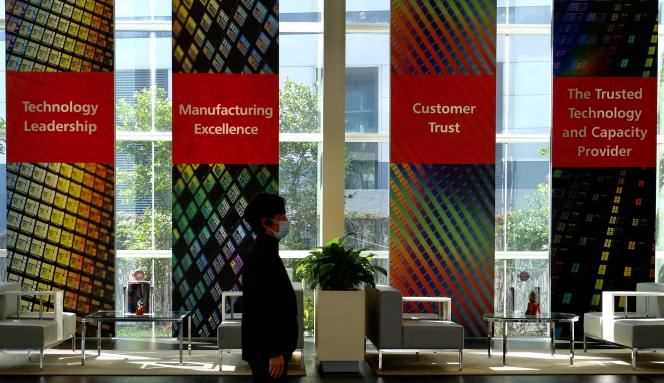Suddenly, the world’s leading industry hit the off button. Peugeot, Fiat, Citroën, Volkswagen, Ford, Toyota announced at the end of September the shutdown of a large part of their factories. That of Opel in Eisenach, Germany, has shut down its machines for at least three months. Toyota cut global production by 40% in September 2021, and analysts now predict the sector will lose more than 200 billion euros over the year.
It was not an epidemic or a cyclone that brought this vital sector of the economy to the ground, but a small square of glass one centimeter wide finely etched with billions of lines ten thousand times thinner than a hair. human. It is to this tenuous thread that now holds much of the world economy, and to a company that only specialists had heard of before the crisis.
TSMC, for Taiwan Semiconductor Manufacturing Company, is today the most strategic company in the world. Because it is practically the only one who knows how to manufacture the latest generation electronic chips. Because these chips, also called semiconductors, are everywhere, in our kitchens, our living rooms, our phones, our cars and the machines that make them. But also because Taiwan, where they are produced, is at the center of a standoff between China and the United States which could soon lead to armed conflict. Fighter planes and battleships crisscross the sky and the waters of the Taiwan Strait, which separates the island from its communist big sister. With the stake in particular, the control of… TSMC.
The invention of high-tech globalization
Its history merges with that of globalization and begins in the offices of the company Fairchild, near San José, California. This company, now defunct, invented, on the threshold of the 1960s, the semiconductor, an electronic circuit engraved on a silicon wafer. A new era was dawning, the computer was a teenager and the first calculators, watches and other gadgets were dawdling.
Quickly, the Japanese smelled the ground of conquest. In Paris, they photographed the Eiffel Tower, but in San José, something else interested them. “They came to our house and took pictures of everything, even the mess of my office”, remembers Thomas Zhao, a very young engineer at the end of the 1970s. As they had done in the automobile two decades before, they copied to perfection the American factories with their concern for manufacturing excellence. “ In a few years, they have obtained returns in terms of production quality – flawless – by more than 80% when it was half less in the United States ”, adds Thomas Zhao. The performance attracted the industry leaders. Globalization, already underway in textiles, was reaching the most sophisticated industry in the world. It is a 55-year-old American engineer who will give the decisive boost.
You have 84.86% of this article to read. The rest is for subscribers only.
